Who We Are
Geospatial data and analysis is critical for conservation, from planning to implementation and measuring success. Every day, mapping and spatial analysis are aiding conservation decisions, protected areas designation, habitat management on reserves and monitoring of wildlife populations, to name but a few examples. The Geospatial group focuses on all aspects of this field, from field surveys to remote sensing and data development/analysis to GIS systems.
How to Get Started
Want to learn more about how remote sensing is used in conservation? Check out the first two episodes of this season of Tech Tutors, where our Tutors answer the questions How do I use open source remote sensing data to monitor fishing? and How do I access and visualise open source remote sensing data in Google Earth Engine? You can also check out our Virtual Meetup Archive for a range of panels that overlap with Geospatial topics, or take a look at our Earth Observation 101 lecture series from Dr. Cristian Rossi.
Our Purpose
The WILDLABS Geospatial Group is for conservation practitioners, geospatial analysts, and academics that want to:
- Share geospatial resources, best practices, data, and ideas;
- Network amongst geospatial and data practitioners;
- Create peer learning opportunities;
- Promote the use of free and open-source geospatial software; and
- Improve the use of GIS software and geospatial analyses in conservation management and research.
Group curators
Over 35 years of experience in biodiversity conservation worldwide, largely focused on forests, rewilding and conservation technology. I run my own business assisting nonprofits and agencies in the conservation community



- 5 Resources
- 62 Discussions
- 12 Groups
- @ahmedjunaid
- | He/His
Zoologist, Ecologist, Herpetologist, Conservation Biologist





- 63 Resources
- 7 Discussions
- 26 Groups
Fauna & Flora
Remote Sensing Scientist, Conservation Technology & Nature Markets @ Fauna & Flora - WILDLABS Geospatial Group Co-Lead



- 34 Resources
- 28 Discussions
- 8 Groups
I am a biology undergraduate student who is interested in the field of wildlife conservation and has skills in field observation and identification
- 0 Resources
- 0 Discussions
- 12 Groups
- @dhuha
- | Tari
Name: dhuha lastari I am a highly motivated and dedicated individual with a strong passion for forestry. With 4 years of experience in conservation, I possess a unique blend of skills and knowledge that enable me to make a positive impact in my community. As a former member of
- 0 Resources
- 0 Discussions
- 1 Groups
- 0 Resources
- 0 Discussions
- 4 Groups
EcoFirst
Biologist and naturalist involved in NGO's activities as well as profesionnally
- 0 Resources
- 1 Discussions
- 3 Groups
WildData Annotation Lab
- 0 Resources
- 0 Discussions
- 6 Groups
- @kbubnicki
- | he/his
Ecologist, data scientist, and programmer with over 13 years of professional experience. Open source and Linux enthusiast. Researcher at the Mammal Research Institute, Polish Academy of Sciences, and CEO of the Open Science Conservation Fund.

- 0 Resources
- 4 Discussions
- 5 Groups
Society for Conservation GIS


- 0 Resources
- 25 Discussions
- 5 Groups
Department of Conservation (New Zealand)
I work with the Terrestrial Biodiversity Team at the Department of Conservation, New Zealand. I'm interested in machine learning and spatial data science.
wekaResearch.com | doc.govt.nz

- 0 Resources
- 9 Discussions
- 4 Groups
World Wide Fund for Nature/ World Wildlife Fund (WWF)
WWF-Tanzania GIS Specialist/Developer/Trainer
- 0 Resources
- 1 Discussions
- 7 Groups
Software engineer working on natural resource management technology.
- 0 Resources
- 0 Discussions
- 6 Groups
- @kwalker3
- | she/her
The Nature Conservancy
Spatial Conservation Scientist and Program Manager
- 0 Resources
- 0 Discussions
- 3 Groups
- @mjwethin
- | He/Him
PhD Candiate studying Antarctic penguins and pack-ice seals
- 0 Resources
- 0 Discussions
- 4 Groups
R Package - pMEM
30 November 2024
R Package - swaRmverse
28 November 2024
BATS
28 November 2024
Statistics Globe - Basics to Mastery: The Ultimate Course on Statistical Methods in R
27 November 2024
https://doi.org/10.3390/fire7110413
27 November 2024
The paper looks at technology advances for vegetation cover changes monitoring. For example, computer vision methods to infer 3D parameters via contextual learning from optical images.
25 November 2024
Interesting webinar on the use of advanced technologies(e.g. Artificial Intelligence, cloud computing, drones, camera traps and satellites) for biodiversity monitoring in the Amazon. Also available in Spanish.
25 November 2024
FAO has developed a dashboard that provides an overview of technological solutions (platforms and satellite imagery etc.) that countries use to monitor forest dynamics and improve reporting on forest related emissions...
25 November 2024
Treeconomy is a venture-backed earth-tech startup working at the dynamic intersection of technology, ecology, and finance.
18 November 2024
June 2025
event
event
October 2025
event
November 2025
September 2024
event
126 Products
Recently updated products
| Description | Activity | Replies | Groups | Updated |
|---|---|---|---|---|
| The loss of the free NICFI tropics data has been a huge loss for us at CI. We have many teams that were using it for lots of different use cases. If anyone has alternatives, we... |
|
Geospatial | 4 days 1 hour ago | |
| Hi all! I recently did a little case study using RGB drone data and machine learning to quantify plant health in strawberries. I wanted to... |
|
Citizen Science, Conservation Tech Training and Education, Drones, Geospatial | 1 week 1 day ago | |
| I have posted about this in a different group, but I love boosting the impact of my communication through use of visuals. Free graphics relating to conservation technology... |
|
Geospatial, Climate Change, Community Base, Connectivity, Funding and Finance, Open Source Solutions | 3 weeks 3 days ago | |
| One of our goals with explorer.land is to bridge satellite data and on-the-ground perspectives — helping teams combine field updates,... |
|
AI for Conservation, Geospatial, Open Source Solutions, Sensors | 1 month ago | |
| 15 years ago I had to rebuild the dams on a game reserve I was managing due to flood damage and neglect. How I wished there was an easier,... |
|
Drones, Conservation Tech Training and Education, Data management and processing tools, Emerging Tech, Geospatial, Open Source Solutions | 1 month 1 week ago | |
| Hi @iainmcnicol , welcome to WILDLABS! Thanks for posting this on here. I have shared with my colleagues at Fauna & Flora who have some experience (especially with the... |
|
Community Base, Geospatial, Protected Area Management Tools, Wildlife Crime | 1 month 1 week ago | |
| A nice work from @dmorris! See his LK post. "Lots of information in the conservation literature is represented in maps (e.g., the... |
|
AI for Conservation, Geospatial | 1 month 2 weeks ago | |
| Yep see you on friday |
+3
|
Geospatial, Acoustics, AI for Conservation, Camera Traps, Citizen Science, Community Base, Data management and processing tools, Emerging Tech, Open Source Solutions, Protected Area Management Tools | 1 month 3 weeks ago | |
| Yep we are working on it 1/ segment 2/remote unwanted ecosytem3/get local potential habitat4/generate5/add to picture |
|
Geospatial, AI for Conservation, Data management and processing tools, Open Source Solutions, Software Development | 1 month 3 weeks ago | |
| All sound, would be nice if there were only 5, though! |
|
AI for Conservation, Citizen Science, Data management and processing tools, Emerging Tech, Ethics of Conservation Tech, Funding and Finance, Geospatial, Open Source Solutions, Software Development | 1 month 4 weeks ago | |
| Good morning JocelynThank you very much for your comment, this is proving to be very useful advice and thank you so much for setting me on the right path!! This is very exciting!!... |
|
Animal Movement, Citizen Science, Human-Wildlife Conflict, Marine Conservation, Drones, Community Base, Geospatial | 1 month 4 weeks ago | |
| Means so much. Thank you, @CathyNj. |
|
Geospatial | 1 month 4 weeks ago |
Milos Makes Maps
200 Basemaps with a couple lines of code
4 October 2024 8:11am
7 October 2024 8:56am
You're welcome, Liz!
Want to learn QGIS!
26 December 2023 11:49pm
20 September 2024 3:59pm
GIS is an inevitable tech that's used in many field where wildlife science ain't an exception. I scrolled through the conversation and I hope there are plenty of resources here by now... So I would like to share few things relevant to the software and the importance in wildlife science.
Speaking about my usage of GIS in wildlife science, I started using it since during my bachelor's in wildlife science for identifying biodiversity rich zones in the Nilgiri hills of India, a decade back... Continued with an Master's degree in wildlife science, GIS was again useful for estimating the population of tigers in Mudumalai Tiger Reserve in India. Again for my MPhil thesis, I used occupancy models integrated with SDM for geckos to delineate the boundaries for gecko genera ,surprisingly there was this elevation which acted to separate one genus from another showing a altitudinal preference towards elevation (Biogeographically)
And so within this timeline I could see the evolution of the software and the usage trends in this field.
It still excites me , either to do something about creating a new shapefile for an unexplored remote region ,or predicting the range dynamics under species distribution modelling!
Thrills too,
Mapping for Species distribution models (SDM) using ecological knowledge, more often
- a taxonomist gets benefitted of identifying new species through the predictions.
- A conservation policy maker can identify places for species translocation in future (under climate change scenarios)
- Am evolutionary biologist can understand the biogeographic patterns of species from paleo climate to future via current climatic conditions
- Identify critical conservation blocks for immediate conservation of species of concern under anthropogenic pressures (For eg, Tigers or Critically endangered species)
Use the resources (online and via researchers ) try mapping more (maybe your study species of interest ) to study of interest (study area, biogeography, Sdm, LULC etc) using more of satellite data! It's really interesting this way!
Sure there are more avenues to use GIS BEING A Wildlife Biologist! Infact, inevitable:)
Best wishes
Abinesh A
5 October 2024 2:50am
Hello Sir,
Thank you so much for your reply and sharing this amazing resource, so far I have got some really great resources, so thank you for adding to those. I hope you can find some for your studies as well by going though the chat.
best of luck for you Masters.
5 October 2024 2:52am
Hello Sir,
Thank yo so much for sharing such an insightful message, as you said I have got some wonderful resources from other community members, so yes, just want to get better with QGIS now.
Thank you so much.
Advancing a Geographic Approach in Conservation Science
4 October 2024 10:34pm
15 October 2024 9:09pm
African Research Fellowship: 2024/2025
4 October 2024 10:24pm
ESA Training on EO for Forestry
4 October 2024 10:14pm
Biodiversity Data Engineer
Natural Lands Map V 1.0
4 September 2024 6:51pm
24 September 2024 8:32pm
Thanks for the feedback, Chelsea. Agree that it would be useful to understand who will be using it. I suppose other GIS/Remote Sensing specialists within NGOs. Perhaps someone in your team, @Helga_Kuechly ?
Also if anyone happens to have experience using the dataset it would be great to add this to the Inventory and also provide feedback to WRI through this form too.
30 September 2024 11:35pm
This link shows the difference between the new version and the old version of the Natural Lands Map for Cote d'Ivore and Ghana showing a lot less natural forest.
#côted #ghana | Land & Carbon Lab
🌍 Version 1 of our new, open-source Natural Lands Map combines local data with global data to improve land cover delineation! For example, here we can see how including local data enhances the accuracy of maps in #Côted’Ivoire and #Ghana, showing much less natural forest than what’s possible with global data alone. This tool, developed in collaboration with WWF, Systemiq Ltd. and Science Based Targets Network, provides critical insights for sustainable sourcing, addressing issues like deforestation and habitat loss. Check out our blog to learn more: https://bit.ly/3TEQa8q
2 October 2024 8:34am
That is great
Awesome GEE Community Catalog
1 October 2024 8:12pm
Open Geospatial Solutions
1 October 2024 12:09pm
Rapid geospatial package install
26 September 2024 9:15am
30 September 2024 11:20pm
This is great, thanks for sharing Vance. It looks very comprehensive and includes geemap. Amazing! This will save a lot of time and headaches. Would be great to have some reviews of these packages in the Inventory at some point!
GeoDelta Labs
26 September 2024 11:35am
Integrating Satellite Data with on-the-ground conservation tech
9 September 2024 4:59pm
20 September 2024 3:12pm
Hi, Seamus—welcome to WILDLABS!
I work on building ground and sea-truthing technologies for satellite remote sensing related to conservation tech. For example, we have used data collected from Smartfins (thermometers on surfboard fins) to validate Landsat TIRS thermal data and other low-cost tech such as mini- and sensing Secchi disks to evaluate satellite ocean color data. I don't work in conservation tech in the strictest sense (more accurate to say coastal water resources/resilience), but of course it's related, so thought I'd chime in.
Sounds like a great position at Planet, and an important pursuit—good luck, and I hope our paths cross!
24 September 2024 6:02pm
Hi Phil,
Thanks for sharing - this is really interesting work!
Seems like a cool integration of ground-based (or ocean-based) data and satellite data, with a community science aspect as well. I look forward to giving this paper a full read.
Thanks,
Seamus
Design-led innovation for nature
20 September 2024 2:24pm
Remote Sensing Consultancy for Rewilding Europe
18 September 2024 3:59pm
Monitoring on a Shoestring
16 September 2024 8:48am
NASA ARSET Trainings
28 August 2024 8:06pm
9 September 2024 10:18am
ARSET have amazing resources.
13 September 2024 5:17pm
Hi there! Funnily enough, I have been attending ARSET Trainings for years - I think I've participated in about 80% of the ones they have offered over that time - they are awesome, particularly regarding providing ideas for data sources or tools. I find myself always wanting more of a hand's up support with many of them, but they also have some that go through activities in Google Earth Engine, etc. I've been longing for them to setup a QGIS training series with many of the workshops, however I imagine that would be a pretty big lift. I recommend taking as many as you can to gain the insights into resources!
Cheers,
Liz
Landsat Explorer
12 September 2024 7:03am
MAPMIXTURE: An R package and web app for spatial visualisation of admixture and population structure
ANGELA ANDREW MASSAY
7 June 2024 12:43pm
10 September 2024 12:27pm
Thanks Ahmed, I will make sure to install one of them from the internet.👍
10 September 2024 11:39pm
Definitely start with free QGIS since all the others Ahmed mentioned have licensing requirements. QGIS is well supported and can do almost everything other systems can do, and in some cases more. And not to mention all the tutorials and youtube videos to explain from basic to very advanced usage.
11 September 2024 4:07pm
Thank you so much for your advice.🙏
Global model for Livestock detection in airborne imagery - Data, Applications, and Needs
12 August 2024 8:19pm
4 September 2024 6:15pm
It looks like the website has not been updated since 2022 and indeed you need to register. If you go under 'Manage Account' you may be able to register. I tried to register but I got an error saying 'Login failed! Account is not active'. I got an email saying "Your account must be approved before being activated. Once your account has been approved, you will be notified." So I am waiting for the account to be approved...
I'll keep you posted
6 September 2024 12:46pm
Hi Ben!
Great initiative!
A review of deep learning techniques for detecting animals in aerial and satellite images
https://www.sciencedirect.com/science/article/pii/S1569843224000864#b0475
lists a number of data sets (incl. one published by you it seems...)
Also, @dmorris keeps a list of Terrestrial wild animal images (aerial/drone):
https://lila.science/otherdatasets#images-terrestrial-animals-drone
List of other conservation data sets - LILA BC
LILA BC - List of other conservation-related data sets
which seem like it might be useful for you.
9 September 2024 8:10pm
Hi @benweinstein !
- Surely a general detector might be very useful for detecting objects in aerial imagery! Maybe something similar to what MegaDetector does in camera trap images, generally detecting person, animal, and vehicle (and thus also empty photos). This could greatly improve semi-automated procedures. It could also serve as a first step for context-specific detectors or classifiers to be developed on top of this general one.
- There is also the WAID dataset that is readily available. Our research group could also provide images containing cows, sheep, and deer from South America.
Best
DYNAMICSDM: An R package for species geographical distribution and abundance modelling at high spatiotemporal resolution
9 September 2024 9:58am
phytools 2.0: an updated R ecosystem for phylogenetic comparative methods (and other things)
9 September 2024 9:53am
Alaska Satellite Facility
9 September 2024 7:55am
EarthExplorer USGS
9 September 2024 7:42am


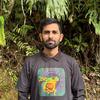










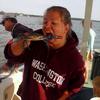




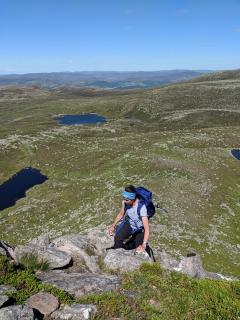





















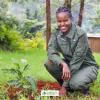








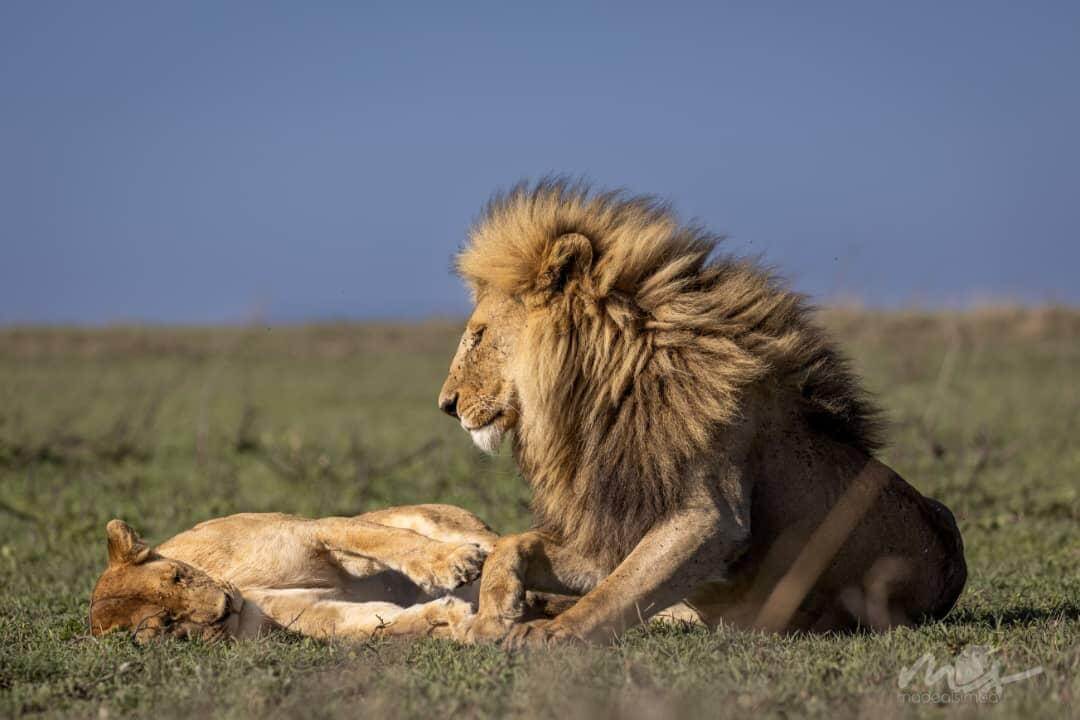




4 October 2024 4:55pm
Sweet!! Thanks for this pro tip Vance!